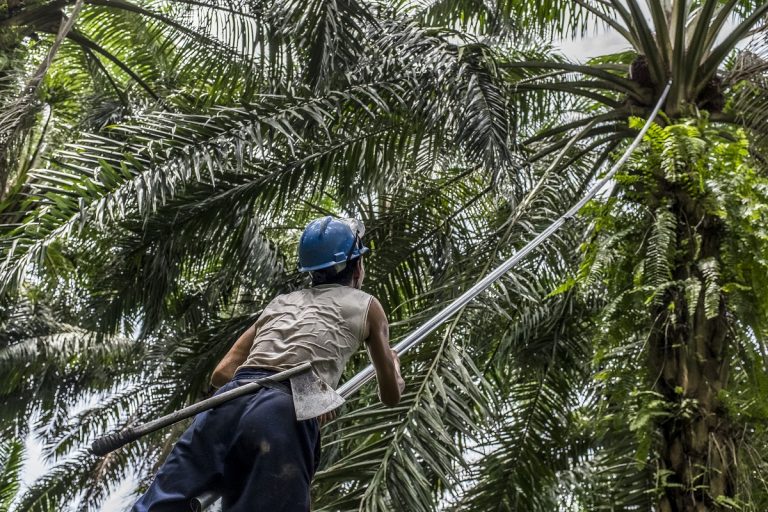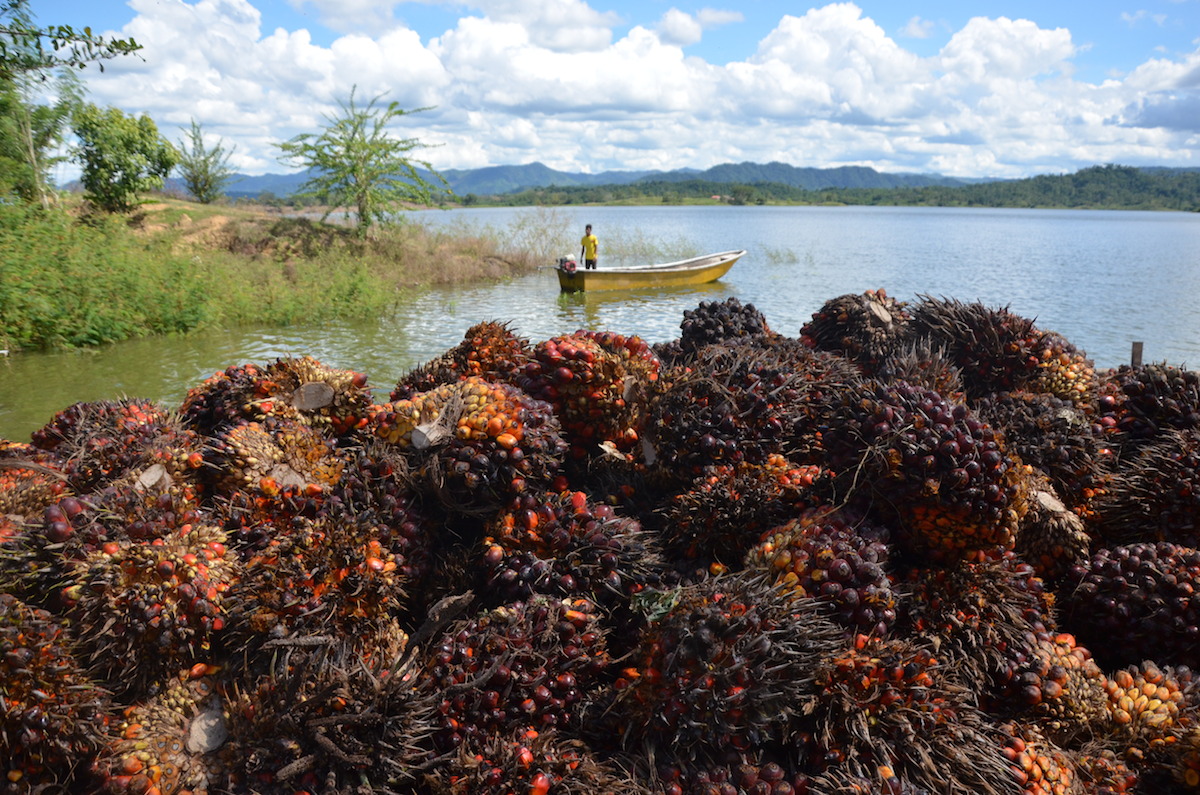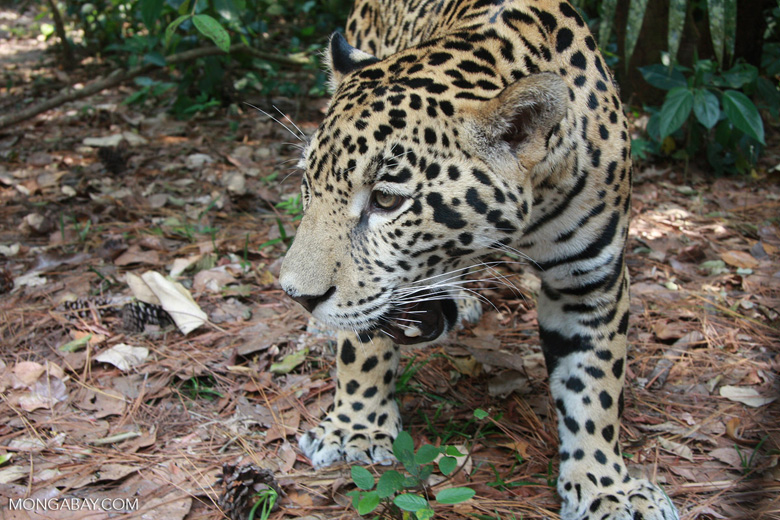- The world’s palm oil supply used to come almost entirely from just two countries: Indonesia and Malaysia. But over the past couple decades, interest in the popular commodity crop has increased in other tropical countries around the world.
- Expansion in these new frontiers has had a variety of impacts, from habitat loss and degradation to alleged violation of the land rights of local communities.
- Here, in no particular order, are some of our favorite Mongabay stories about palm oil expansion around the world and the issues that affect it.
- A separate post will look at palm oil stories within Indonesia and Malaysia.
Small farmers feel the pressure as Ecuador’s palm oil sector expands
The first commercial oil palm trees were planted in Ecuador in 1953. Since then, the country has become Latin America’s second largest producer of oil palm, and the world’s sixth largest. The region surrounding the town of La Concordia is one of the country’s centers of palm oil production, where oil palm plantations were largely developed on land already degraded for agriculture.
But a volatile market and a deadly disease are cutting deep into the pockets of oil palm farmers there who, because of oil palm’s long harvest cycle, worry they’re locked into a doomed investment.
“I put myself in this business in 2000 when it was going well, but now with these palms I can’t get out,” said oil palm grower Jorge Jurado.

The RSPO rolls out a total ban on deforestation
In November, the Roundtable on Sustainable Palm Oil (RSPO) – the world’s largest palm oil sustainability certification body – announced that it adopted new standards that will prohibit its member companies from clearing any type of forest for new oil palm plantations. Previously, the RSPO allowed its members to clear secondary forests and peatlands that a peat layer no deeper than three meters (10 feet). The move followed consumer and investor backlash that criticized its former policy as too lax. Many conservationists lauded the new ban, but some say the RSPO is giving companies too long of a grace period to conform to the new requirements.
“Adopting no-deforestation into the RSPO’s standards is an important step toward breaking the links between certified palm oil and forest destruction,” said Kiki Taufik of Greenpeace Indonesia. “However, the new rules will take at least two years to come into effect, and right now numerous RSPO members are destroying rainforests with impunity. The RSPO must address this immediately if it is to make a real difference on the ground.”

Brazilian palm oil expansion would be ‘extremely hostile’ to Amazon wildlife
The Brazilian Amazon has around 2.3 million square kilometers (nearly 900,000 square miles) of land suitable for oil palm cultivation, making it one of the largest areas in the world for potential expansion of the palm oil industry. The Brazilian government is vying to seize on this as a new opportunity for socioeconomic development, which some say could mean that the Amazon could become one of the largest palm oil producing regions in the world within just a few decades.
But researchers say this would be a disaster for wildlife, finding far fewer medium and large mammals in plantation areas than in natural forest.
“These mammal taxa account for a disproportionate amount of the overall vertebrate biomass in Amazonian forests,” they wrote in a study. “So any adverse effects to these species could amount to profound repercussions to ecosystem functioning across entire landscape mosaics.”

How Colombia became Latin America’s palm oil powerhouse
Commercial oil palm cultivation in Colombia began in 1945. In 2002, the palm oil industry began a trajectory of rapid growth. Today, Colombia produces more palm oil than any other country in Latin America, and is the fourth-largest producer globally. In 2016, the FARC – Colombia’s oldest, largest guerrilla group – disarmed and demobilized, which has opened up more areas to agricultural expansion.
Conservationists worry recent land use policy reforms will effectively “legalize the accumulation of land” that agribusiness interests “illegitimately obtained during the armed conflict” at the expense of the country’s small farmers and indigenous groups.
“The palm growers don’t pay local taxes, or do anything to help the municipality,” said Puerto Concordia councilmember Ricardo Vargas. “We need help… our schools are deteriorating, the roads are poorly maintained, we can’t adequately support our grandparents or children, but the palm growers don’t lift a finger.”

Ecuador plans to focus sustainability certification on provinces instead of companies
In an effort to mitigate environmental damage from oil palm cultivation, Ecuador’s Ministry of Agriculture reactivated its Jurisdictional RSPO Certification plan in March 2018. This jurisdictional approach focuses on certifying entire provinces instead of individual companies and plantations, which has tended to be the norm in other parts of the palm oil-producing world. Jurisdictional RSPO certification is also seen as a way to help the country’s palm oil sector gain better access to world markets, which are increasingly requiring sustainability certification for their products.
The plan has been lauded by some, including the United Nations REDD program. But some worry it may not be applicable in some areas of the country, such as the Ecuadorian Amazon, and that a large-scale jurisdictional approach may be vulnerable to political turnover.
“The WWF does NOT support the expansion of oil palm in Ecuador,” said Jorge Rivas of WWF-Ecuador. “We believe that the increase in production of palm oil should happen by increasing the yield of existing crops or in the realization of new crops in already-intervened areas like abandoned pastures and not in the expansion of the surface of new crops in tropical forest areas.”

Keeping riverbanks forested improves palm oil yields
Riverbank forests have been heralded as the last bastions of habitat in places with heavy oil palm plantation development. But a study published earlier this year also finds that they can be a boon to palm oil producers, as well. Its results indicate a riparian forest buffer of 10 to 20 meters could maximize yields within a decade, while larger buffers of 30 meters or more have bigger payoffs in the long term. The reason? Forests reduce erosion and mitigate flooding, which can destroy oil palm crops.
“We were very conservative with our assumptions, always erring on the side of caution, so we were surprised that the timeframes until the economic return were still so short,” said lead author Alexander Horton of Cardiff University. “If we could properly account for all of the ways in which leaving riparian buffers benefit the local population, then we might see a real shift in attitude.”

Report finds a palm oil company cleared protected forest in Liberia
Indonesian-owned palm oil company Golden Veroleum Liberia (GVL) cleared hundreds of hectares of protected forest in Liberia between 2010 and 2016, according to a report released in July. The report found GVL’s activities damaged streams and wetlands and proceeded without the free, prior and inform consent of local communities.
Golden Veroleum Liberia is owned y Golden Agri-Resources (GAR). A spokesperson for GAR said they obtained “satisfactory explanations” from GVL regarding similar allegations. Conservationists say the situation highlights the need for more secure land rights for communities in places targeted by agro-industry.
“Otherwise, companies like GVL will continue destroying the forests Liberians depend on for their livelihoods,” said James Otto with the Sustainable Development Institute.

Colombia’s palm oil expansion worries wildlife biologists
Currently sitting at the #4 spot, Colombia aims to overtake Thailand to become the world’s third largest producer of palm oil. But studies have shown that oil palm plantations provide poor habitat for wildlife, supporting far fewer species than natural forest. Researchers say Colombia’s palm oil expansion could have minimal impacts on wildlife habitat – if it takes places on land that’s already been degraded. They urge that plantations not be developed in areas that provide habitat for threatened species or in places that are ecologically important. Biologists are also concerned the most commonly used commercial species of oil palm, African oil palm, could hybridize with native oil palm trees and damage native species’ genetic integrity.
“Some areas highlighted as low conservation risk for threatened vertebrates are in natural savannas of the Orinoco region, which should also be protected from oil palm expansion given their ecological importance,” said Andres Etter, an expert on Colombian ecosystems.

How a UK supermarket chain’s decision to ban palm oil sparked a global debate
In April, UK company Iceland Foods announced that it was removing palm oil from all products produced under its own label, saying it didn’t believe there was enough sustainable palm oil available on the mass market. Conservation organizations like Greenpeace lauded the decision, saying it serves as a “warning shot from a tiny UK company, that could start to grow bigger if palm oil producers and governments don’t tackle the scourge of deforestation.” But critics say such a move would only increase reliance on other kinds of vegetable oils that can’t be produced as efficiently.
“In order to feed the world, palm oil is actually part of the solution, because fewer resources are required,” write researchers from the University of Kent. “Iceland’s move to ban palm oil products, rather than work with the industry to seek sustainably-sourced solutions, could be viewed as a step backwards … Avoiding it altogether runs the risk of putting pressure on other crops that are equally to blame for the world’s environmental problems.”

Communities in Ecuador rise up against palm oil companies they say took their land
In 2000, a palm oil company bought some land in the district of Esmeraldas in northern Ecuador. This land is home to the Afro-Ecuadorian community of Wimbi, a town of some 400 people settled in the 19th century. In 2015, judges in the provincial court of Esmeraldas ruled in favor of the company and ordered Wimbi residents to leave the area. But Wimbi community members refused to do so, forcing the company to leave instead and agree to not develop it. Residents say that the land sale, although legal in the eyes of the court, is invalid as only one person in the community agreed to it.
Afro-Ecuadorian communities have lost an estimated 30,000 hectares of ancestral land over the past 30 years. Research finds palm oil companies have used several tactics in order to acquire land, including invasion, pressure and threats.
“You have your work, or your home, and they just take it all away. How do you feel? Rage. It makes you want to cry,” said Wimbi resident Yessenia Padilla. “It seems like we here in Ecuador don’t have rights. We’ve been here for years. My grandfather and my great-grandfather both lived here.”

Feedback: Use this form to send a message to the editor of this post. If you want to post a public comment, you can do that at the bottom of the page.
